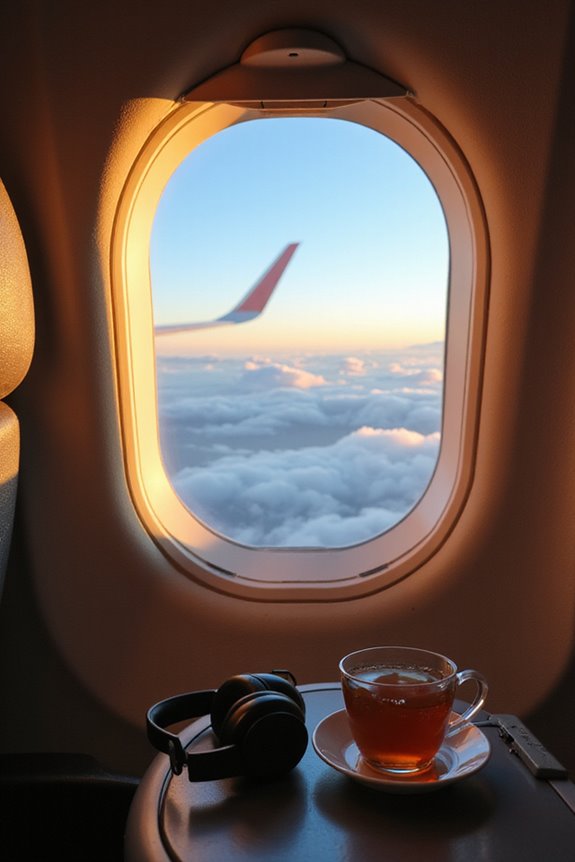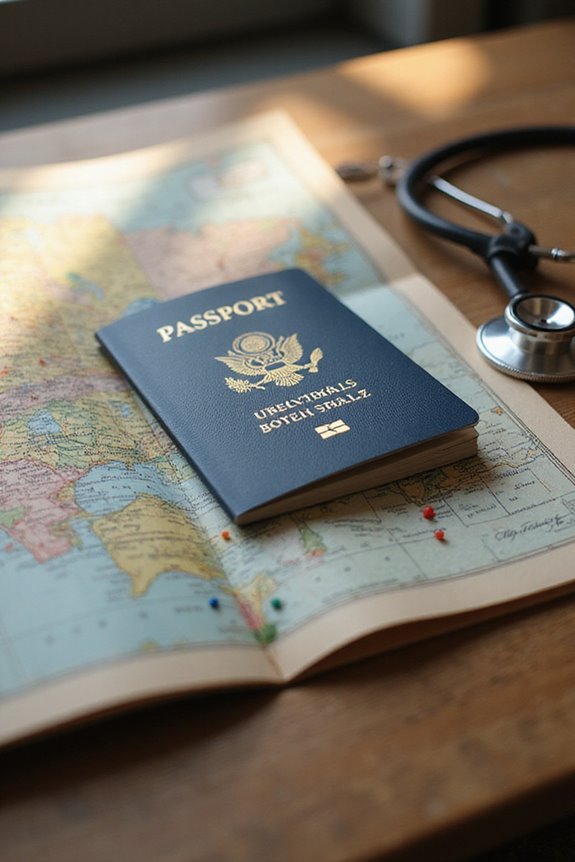Handling motion sickness during flights can feel like an uphill battle, but I’ve got some tips that truly help. First, try sitting over the wings for a smoother ride. Bringing light snacks, like crackers, and staying hydrated are lifesavers too. If you’re prone to nausea, consider using a scopolamine patch before your trip. And don’t forget about relaxation techniques! With the right strategies, you’ll transform your turbulent journey into something manageable, and there’s more to discover that can make your flight even better.
Key Takeaways
- Choose a seat over the wings for a smoother ride and better stability during the flight.
- Keep your gaze fixed on the horizon or outside the window to stabilize your perception.
- Stay hydrated and eat light snacks, like crackers or toast, to help prevent nausea.
- Use deep breathing techniques and relaxation exercises to calm your nerves and reduce symptoms.
- Consider using scopolamine patches or antihistamines, testing them in advance to understand their effects.
Understanding Motion Sickness in Air Travel
When I first started flying, I had no idea that the experience could make me feel so queasy—like I was stuck on a roller coaster that just wouldn’t stop! Turns out, motion sickness happens when there’s a sensory conflict between what my inner ear feels and what my eyes see. Imagine soaring through the clouds, but your body thinks it’s spinning! About 16.2% of passengers report feeling dizzy or nauseated during short flights, and I can totally relate. Cold sweat and pallor? Yep, that happened to me too! The vestibular system in my inner ear was going haywire, causing my stomach to protest. It’s wild how something so thrilling can also leave me feeling like I’m on the brink of a major discomfort!
Prevention Strategies for a Smooth Flight
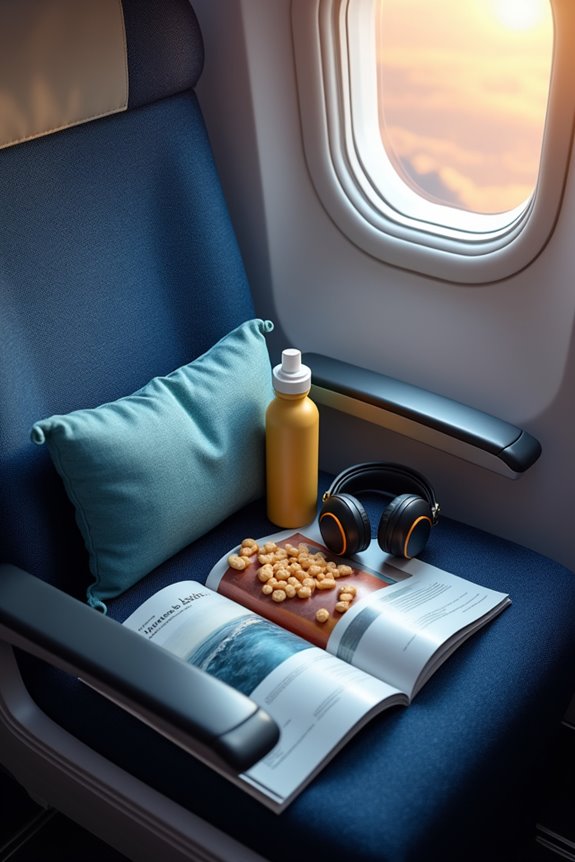
Flying can be a thrilling adventure, but if you’re anything like me, it can also feel like you’re in a roller coaster that just won’t quit. To dodge that nauseating twist and turn, I’ve learned that seat selection is key. I always choose a spot over the wings for a smoother ride. Plus, I love a window seat for a fixed view—perfect to keep my mind steady. Meal planning is essential, too. I stick to light snacks like crackers or toast, steering clear of anything greasy. Hydration is crucial, so I sip plenty of water. And let’s not forget deep breathing! It calms my nerves, making the flight feel a bit more like a breeze and less like a wild ride.
Effective Pharmacological Treatments
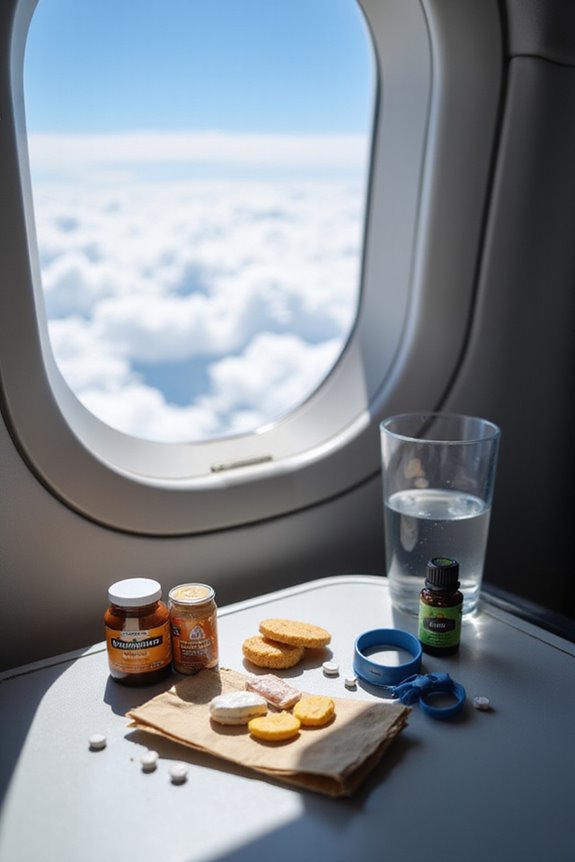
Even though I’ve got my go-to strategies for preventing motion sickness, sometimes I need a little extra help from pharmacological treatments to keep the nausea at bay. One of my favorites is the scopolamine patch—just slap one behind your ear at least four hours before flying, and you’re set for up to 72 hours. It’s a lifesaver! I’ve also tried first-generation antihistamines like cinnarizine and promethazine. They can be pretty effective, but watch out for that drowsiness; I once dozed off mid-flight and woke up confused! Overall, testing these meds before traveling is essential, so you know how your body reacts. Trust me, a little planning goes a long way in keeping those uncomfortable feelings at bay!
Behavioral and Non-Pharmacological Approaches
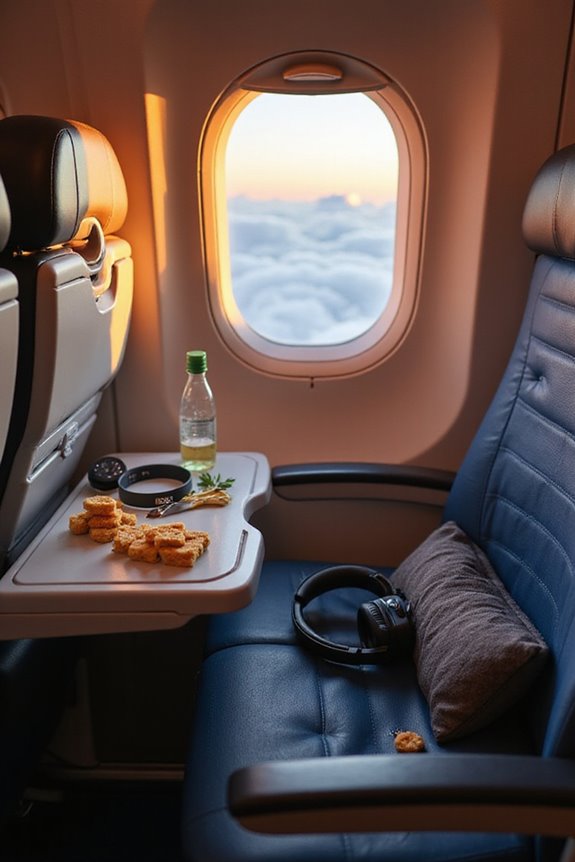
While I’ve relied on medications to combat motion sickness during flights, I’ve found that behavioral and non-pharmacological approaches can be just as effective—if not more so! For instance, I always choose a seat over the wings; it’s way more stable there. I’ve learned to recognize what triggers my motion sickness, so I avoid those activities like the plague. Relaxation techniques, like deep-breathing exercises, really help me chill out. I also focus on the horizon when I can—trust me, it works! As for dietary strategies, I stick to light, low-fat snacks before flying. Staying hydrated and avoiding heavy meals? Total game-changer. These small adjustments have made my flying experience so much more enjoyable!
Managing Symptoms During the Flight
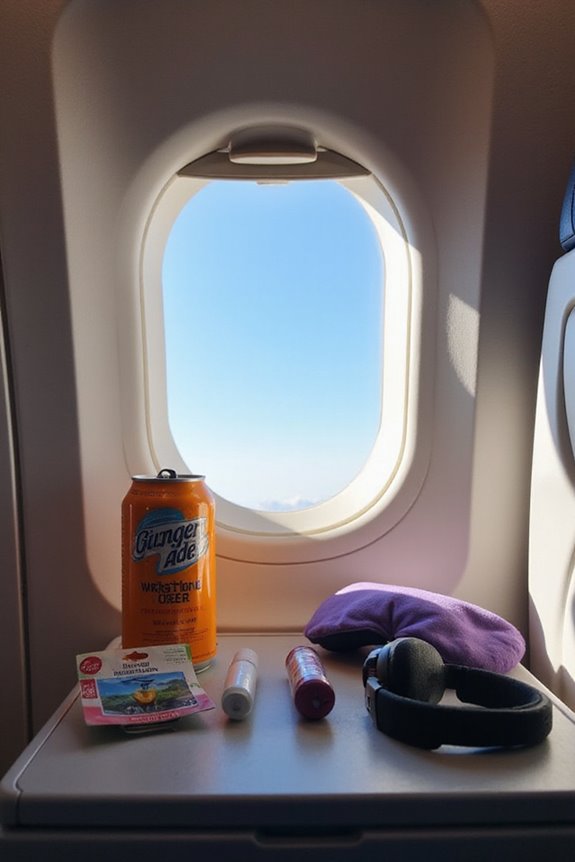
When it comes to managing symptoms during a flight, I’ve learned a few tricks that really make a difference. First off, I love using breathing techniques. Taking slow, deep breaths calms my nerves and helps ease nausea. I also make sure to direct the air vent towards my face for that cool, invigorating breeze. On top of that, I keep my mind busy with cognitive distractions—like listening to a favorite podcast or some upbeat music. It keeps me from fixating on the queasiness. If I feel a little off, I might change my posture or look out the window at the horizon. Trust me, these little strategies can turn a turbulent flight into a more manageable experience!
Statistical Insights on Flight-Related Motion Sickness
You might be surprised to learn that around 16.2% of airline passengers, including myself on a few bumpy flights, report feeling some kind of motion sickness. It’s fascinating, really—nausea hits about 8.4% of us, while vomiting is rare at just 0.5%. Curiously, pilot experiences reveal that over 25% of them have faced motion sickness symptoms too! That’s right, even those at the controls aren’t immune. I’ve noticed that women seem to be more affected than men, which makes me wonder about those pre-flight snacks we all love. It’s all about understanding motion sickness prevalence and how factors like age, genetics, and even ethnic backgrounds can play a role. Who knew air travel could be such a rollercoaster?
Frequently Asked Questions
Can Children Experience Motion Sickness During Flights?
Yes, children can experience motion sickness during flights, displaying symptoms like nausea. I recommend several prevention tips, including keeping ventilation good and avoiding heavy meals before flying to help manage their discomfort.
Is There a Cure for Chronic Motion Sickness?
I’ve learned there’s no definitive cure for chronic motion sickness. While motion sickness remedies can alleviate symptoms, they often don’t eliminate chronic symptoms entirely. Individual experiences vary, making consistent relief challenging for many of us.
How Does Altitude Affect Motion Sickness Severity?
Altitude affects motion sickness severity by altering pressure changes in the cabin. I’ve noticed that lower oxygen levels can intensify symptoms like dizziness and nausea, making flights more uncomfortable for me and others alike.
Are Certain Flights More Prone to Causing Motion Sickness?
I’ve noticed certain flight conditions, like small aircraft and turbulent weather, really increase my chances of feeling sick. Changes in cabin pressure during takeoff and landing can also trigger nausea, making those flights especially tough for me.
Can Pets Also Experience Motion Sickness When Flying?
Imagine your pet’s stomach as a rollercoaster; it’s no surprise they can feel queasy during flights. I’ve found travel tips, like familiar toys, really help ease that anxiety and improve their behavior.

